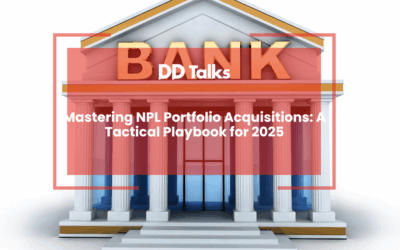Key Takeaways: The Future of Securitisation
- Technological Transformation: AI, blockchain, and digital analytics are fundamentally reshaping securitisation processes, enhancing transparency, efficiency, and risk management.
- Sustainable Finance: Green securitisation is emerging as a critical market segment, reflecting growing investor demand for environmentally aligned investment options.
- Regulatory Adaptation: The securitisation landscape is continuously evolving, with new frameworks focusing on risk retention, compliance, and market stability.
- Emerging Asset Classes: Digital assets, alternative lending platforms, and infrastructure finance are creating innovative securitisation opportunities.
- Strategic Focus: Successful securitisation strategies will require seamless integration of technological innovation, robust risk management, and adaptive regulatory compliance.
Table of Contents
- Understanding Modern Securitisation: Key Trends and Transformations
- How Is AI Reshaping Securitisation Processes?
- Blockchain Technology: Revolutionizing Securitisation Infrastructure
- Green Securitisation: Sustainable Finance Innovation
- Digital Asset Management and Data Analytics
- Regulatory Evolution and Market Adaptation
- Emerging Asset Classes in Modern Securitisation
- Future Outlook: Strategic Opportunities for 2025
Understanding Modern Securitisation: Key Trends and Transformations
Synthetic securitisation has evolved dramatically in recent years, transforming from traditional models into sophisticated financial instruments. Today’s securitisation landscape combines advanced technology with innovative structuring approaches, creating more efficient and transparent markets. The primary drivers include digital transformation initiatives, regulatory changes, and increasing demand for alternative investment vehicles.
Market participants face both opportunities and challenges in adapting to these changes. The integration of technology has streamlined processes while introducing new operational considerations. Traditional barriers to entry are being dismantled through automation and standardisation, opening the market to a broader range of participants.
How Is AI Reshaping Securitisation Processes?
Artificial Intelligence and machine learning are revolutionising securitisation processes through automated risk assessment and predictive analytics. These technologies enable more accurate credit scoring, enhanced portfolio management, and real-time market analysis. AI implementation in securitisation has significantly reduced processing times and improved accuracy in risk evaluation.
Machine learning algorithms now analyse vast datasets to identify patterns and predict market trends, providing valuable insights for investors and issuers alike. However, integration challenges remain, particularly in terms of data quality and system compatibility. The success of AI adoption depends heavily on robust data management frameworks and skilled technical expertise.
Blockchain Technology: Revolutionizing Securitisation Infrastructure
Smart contracts and blockchain technology are fundamentally changing securitisation infrastructure. The implementation of distributed ledger technology enables unprecedented transparency and efficiency in transaction processing. Cross-border transactions benefit particularly from blockchain’s ability to reduce friction and enhance security.
The technology’s immutable nature provides enhanced audit trails and reduces the risk of fraud. Smart contracts automate many aspects of securitisation, from interest payments to compliance monitoring, significantly reducing operational costs and human error. These innovations are particularly valuable in complex, multi-party transactions.
Green Securitisation: Sustainable Finance Innovation
Green securitisation represents a growing segment of the market, driven by increasing focus on environmental, social, and governance (ESG) factors. Climate-aligned assets are becoming more prevalent in securitisation pools, reflecting growing investor demand for sustainable investment options. The regulatory framework supporting green securitisation continues to evolve, providing clearer guidelines for issuers and investors.
This innovative approach to sustainable finance combines traditional securitisation structures with environmental benefits, creating new opportunities for green project funding. The market for green securitisation is expected to expand significantly as sustainability becomes increasingly central to investment decisions.
Digital Asset Management and Data Analytics
Modern securitisation relies heavily on sophisticated digital asset management and data analytics tools. Real-time monitoring capabilities enable better risk management and more informed decision-making. Advanced reporting systems provide comprehensive visibility into portfolio performance and market conditions.
Compliance automation tools ensure adherence to regulatory requirements while reducing operational overhead. The integration of advanced analytics helps identify market opportunities and potential risks earlier, enabling more proactive portfolio management strategies.
Regulatory Evolution and Market Adaptation
The regulatory landscape for securitisation continues to evolve, with new frameworks emerging to address market innovations. Risk retention rules and standardisation efforts aim to create more stable and transparent markets. Cross-border harmonisation initiatives are particularly important as markets become increasingly interconnected.
Market participants must adapt to these changing requirements while maintaining efficiency and competitiveness. The focus on regulatory compliance has led to the development of new tools and processes designed to streamline compliance procedures while ensuring robust risk management.
Emerging Asset Classes in Modern Securitisation
Digital assets and alternative lending platforms are creating new opportunities in securitisation markets. Infrastructure finance and consumer receivables represent growing segments, driven by technological innovation and changing market demands. These new asset classes require adapted approaches to risk assessment and structuring.
The emergence of digital assets has particularly transformed the securitisation landscape, creating new possibilities for portfolio diversification and risk management. Alternative lending platforms provide access to previously underserved markets, expanding the scope of securitisation opportunities.
Future Outlook: Strategic Opportunities for 2025
The securitisation market is poised for significant growth and innovation through 2025. Technology adoption will continue to drive efficiency improvements and create new opportunities. Investment strategies are evolving to incorporate new asset classes and risk management approaches.
Market predictions suggest increased adoption of digital solutions and sustainable finance products. Risk considerations will remain central to market development, with technology playing a crucial role in risk assessment and management. The future of securitisation lies in the successful integration of technological innovation with traditional financial expertise.
Frequently Asked Questions
- What is modern securitisation and how has it changed?
- Modern securitisation has evolved from traditional models into sophisticated financial instruments, integrating advanced technologies like AI and blockchain. It now offers more efficient, transparent markets with streamlined processes and broader participation opportunities.
- How is AI transforming securitisation processes?
- AI revolutionizes securitisation through automated risk assessment, predictive analytics, and enhanced credit scoring. Machine learning algorithms analyze vast datasets to identify market trends, reduce processing times, and improve risk evaluation accuracy.
- What role does blockchain play in securitisation?
- Blockchain technology introduces unprecedented transparency and efficiency through smart contracts, enabling automated transaction processing, enhanced security, and reduced operational costs. It provides immutable audit trails and simplifies complex multi-party transactions.
- What is green securitisation?
- Green securitisation is an innovative approach combining traditional securitisation with environmental, social, and governance (ESG) factors. It focuses on climate-aligned assets and sustainable investment options, reflecting growing investor demand for environmentally responsible financial products.
- What are the emerging asset classes in securitisation?
- Emerging asset classes include digital assets, alternative lending platforms, infrastructure finance, and consumer receivables. These new segments are driven by technological innovation and offer expanded opportunities for portfolio diversification and risk management.
- How are regulatory changes impacting the securitisation market?
- Regulatory evolution focuses on creating more stable, transparent markets through risk retention rules, standardisation efforts, and cross-border harmonisation. Market participants must adapt to new compliance requirements while maintaining efficiency and competitiveness.
- What is the future outlook for securitisation by 2025?
- The securitisation market is expected to experience significant growth through increased technology adoption, sustainable finance products, and innovative risk management approaches. Strategic opportunities will emerge from integrating technological solutions with traditional financial expertise.
How Green and ESG Securitisations Are Reshaping the Financial Markets



0 Comments